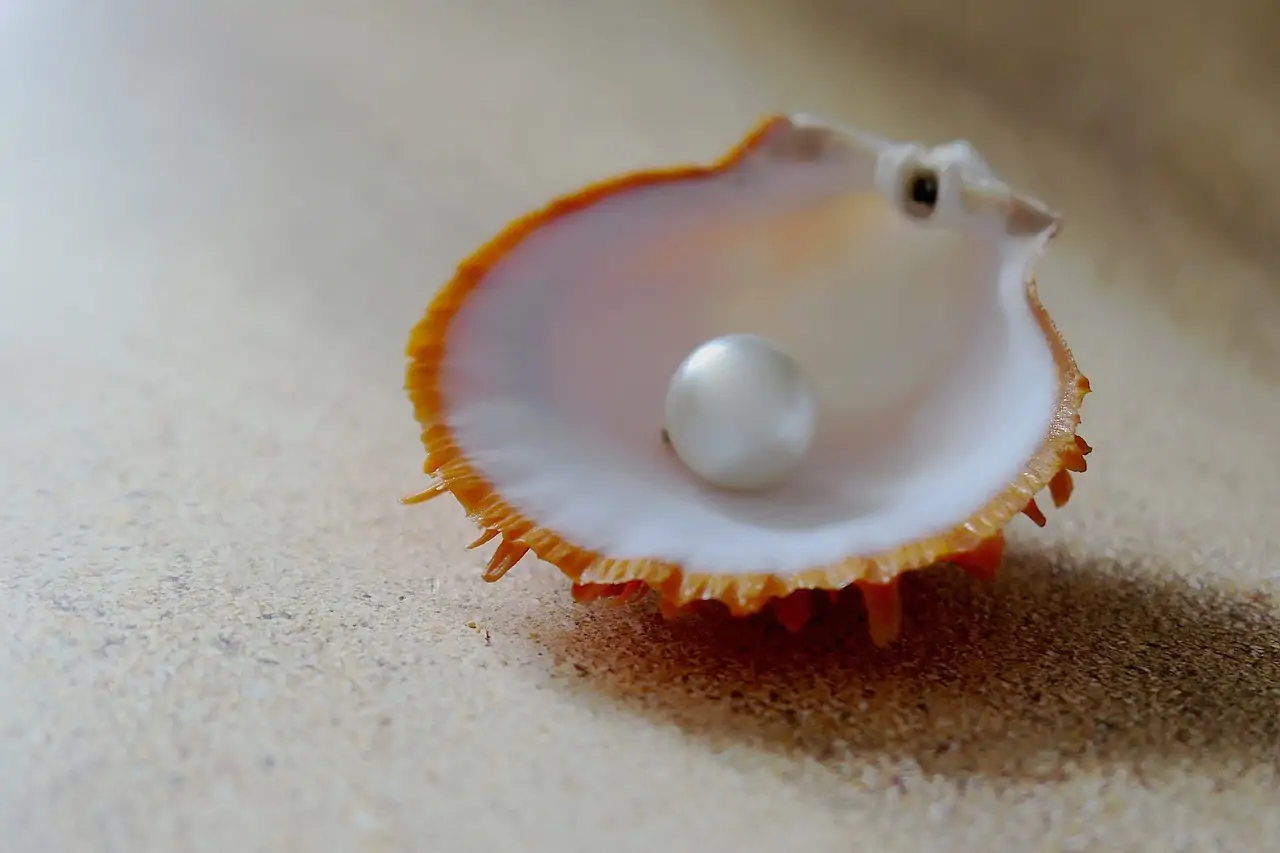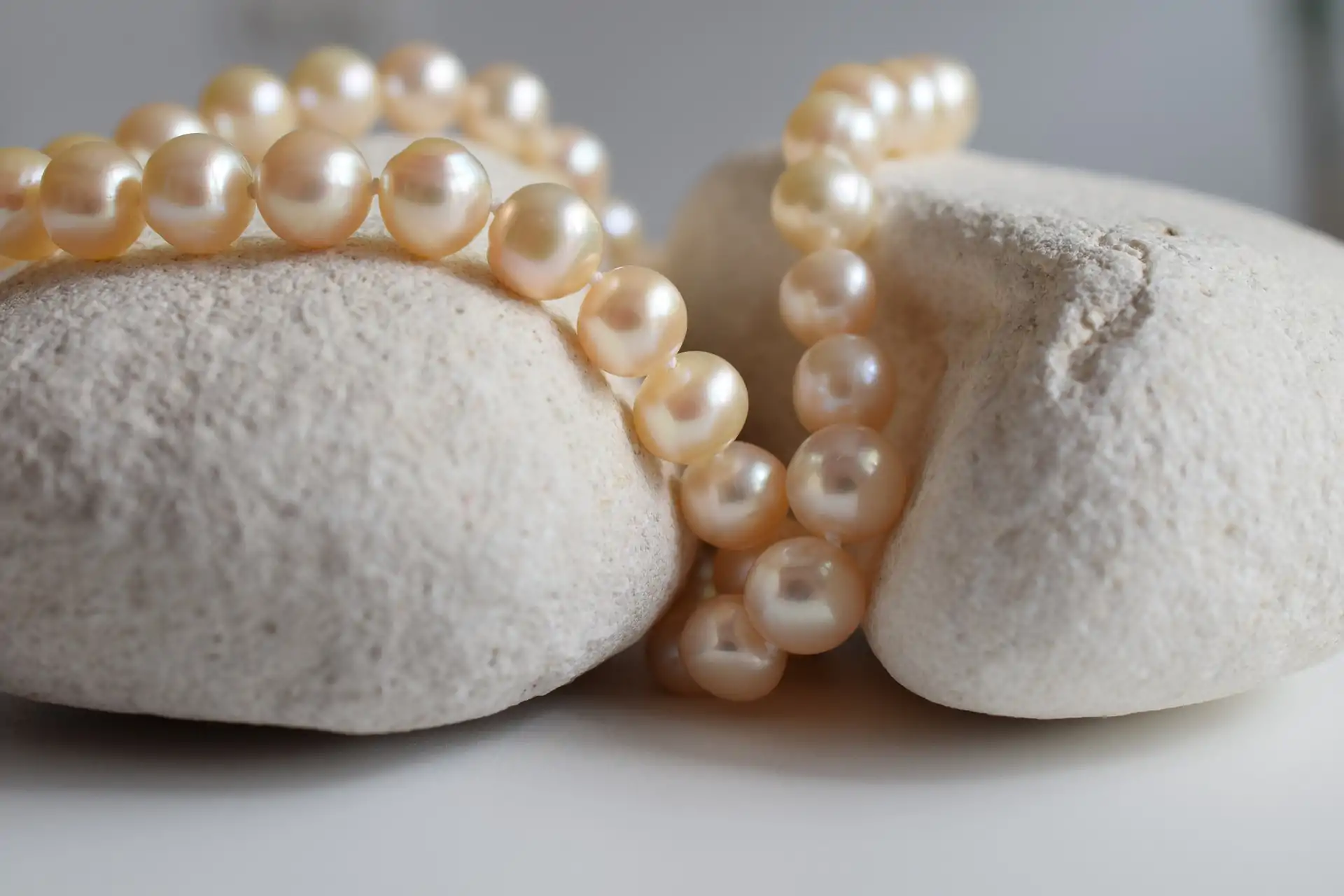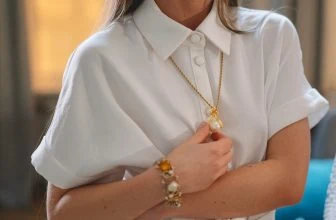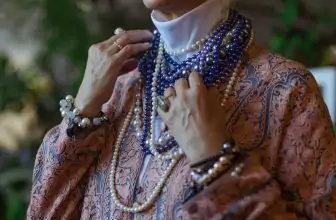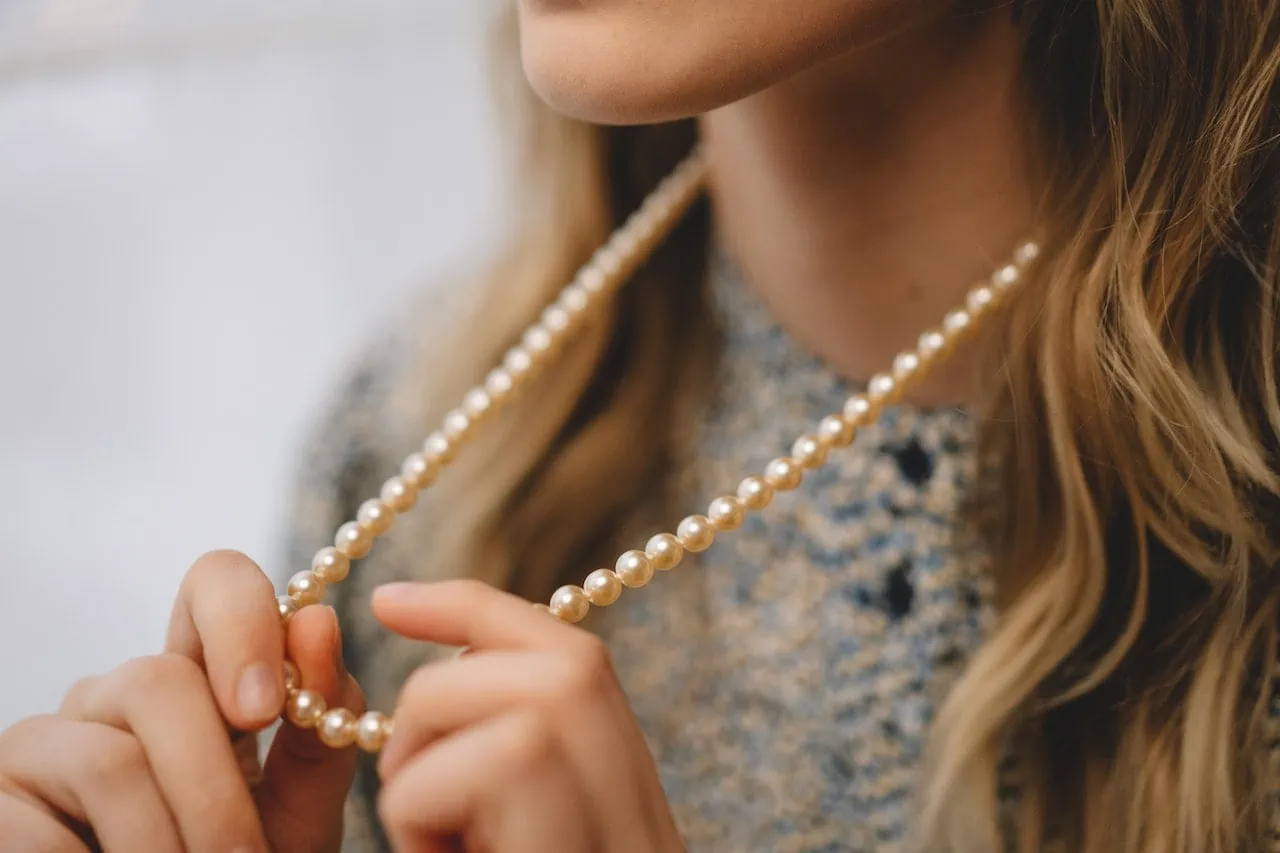
Table of Contents
Of all the saltwater pearl varieties, Akoya pearls are the most well-known and the most abundant. Akoya pearls are the classic white pearl used in jewelry, and if you’re thinking of a traditional strand of white pearls, you’ve probably got Akoya pearls in mind.
Many vendors tend to call any type of pearl Akoyas, so knowing the difference will keep you from getting ripped off. Let’s break down everything you need to know about Akoya pearls and see if this is the right pearl variety for you.
What is an Akoya Pearl?
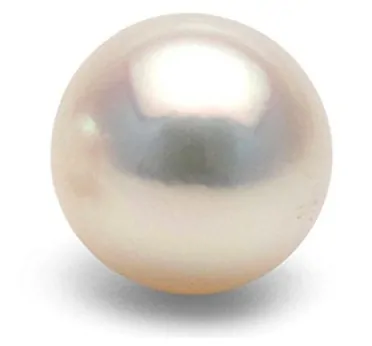
Akoya pearls are typically small in size, with excellent luster and perfect spherical shape. They are a high quality alternative to freshwater pearls and this is reflected in their higher price.
Named after the Akoya pearl oyster, known as the pinctada fucata, these pearls are cultivated in Japan, China, Korea and Vietnam. However, the best Akoya pearls come from Japan.
Akoya pearls were the first to be cultured in the 1920s in Japan, by Mikimoto Kokichi. If the name sounds familiar, that’s because Mikimoto has grown into a household brand for luxury pearl jewelry.
The culturing of Akoya pearls caused a revolution in the pearl industry, bringing prices down and for the very first time, making pearls accessible to all.
Akoya Pearl Colors and Overtones
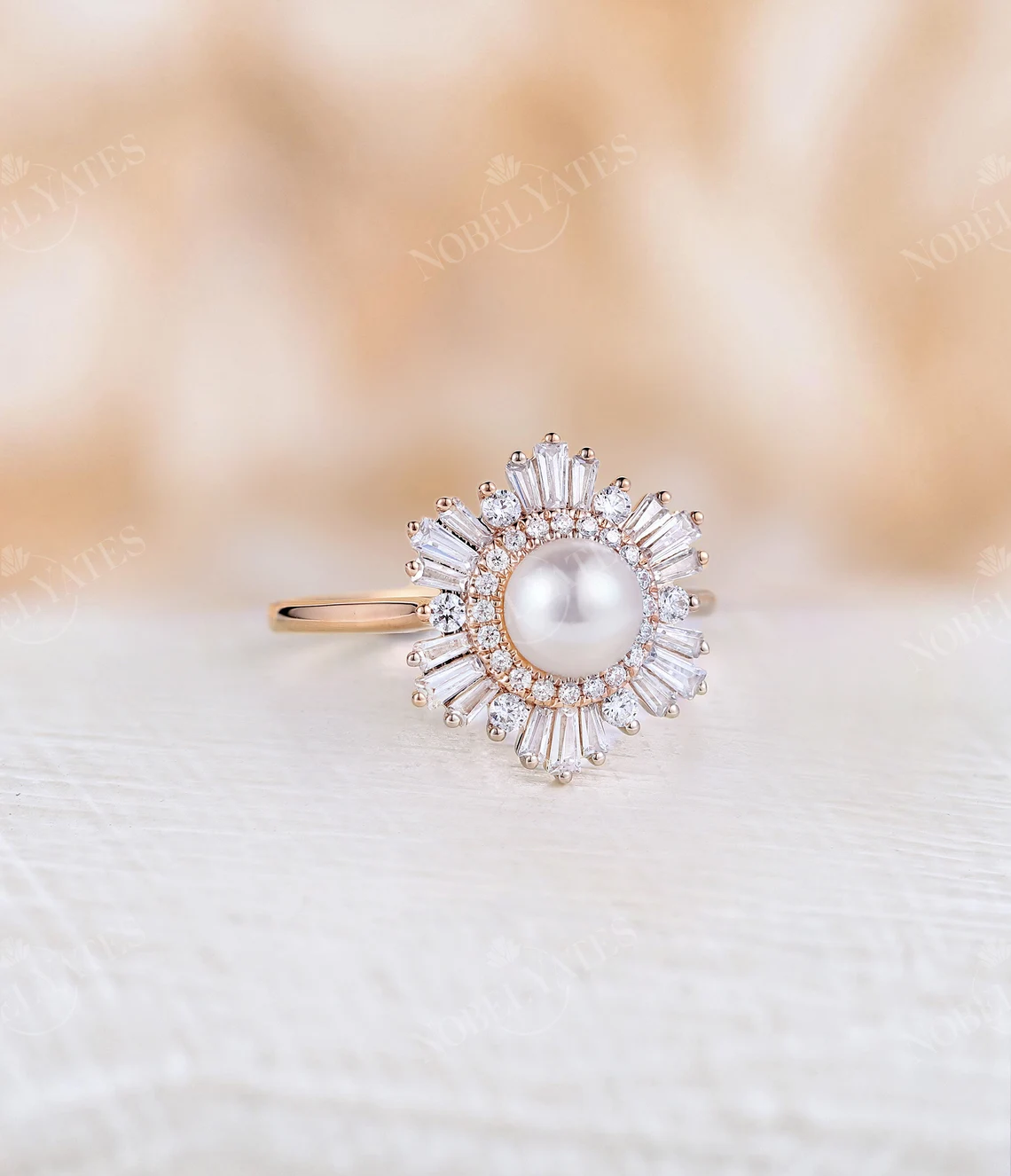
Akoya pearls come in a range of colors, although the quintessential color is white, gray or cream, with cream, pink, green or silver overtones.
Akoya pearls with rose overtones are generally the most sought after as they have a beautiful blush feminine appearance. You may sometimes come across blue Akoya pearls with shining silver and pink overtones, but these are very rare and rather pricey.
Black Akoya pearls are quite popular on the market, but it is important to note that these have been dyed in order to obtain this color. The only naturally occurring black pearls are Tahitian pearls, and all other black pearl varieties receive their color through artificial means.
Akoya Pearl Shapes
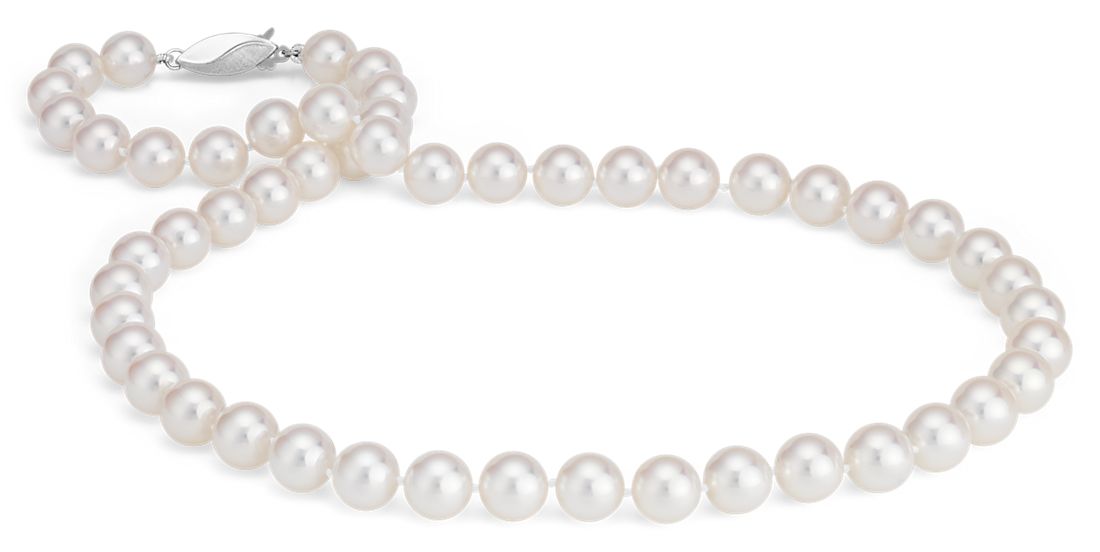
Because Akoya pearls are cultured with a beaded nucleus, they are almost always round or near-round. This makes it easy to match pearls to form pearl strands or pearl bracelets. However, Akoya pearls also occur in irregular baroque and semi-baroque shapes.
Currently, as the trend of wearing non-traditional and unique jewelry designs is on the rise, these irregular shaped Akoya pearls are in demand and make for modern and distinctive designs.
What Size are Akoya Pearls?
Because the Akoya oyster is the smallest pearl producing creature in the pearl culturing world, Akoya pearls are typically small in size. They range from 2mm to about 11mm, with most being between 6mm to 8mm. Akoya pearls are also generally farmed within 24 months, which allows for a short growth period.
Akoya Pearl Luster
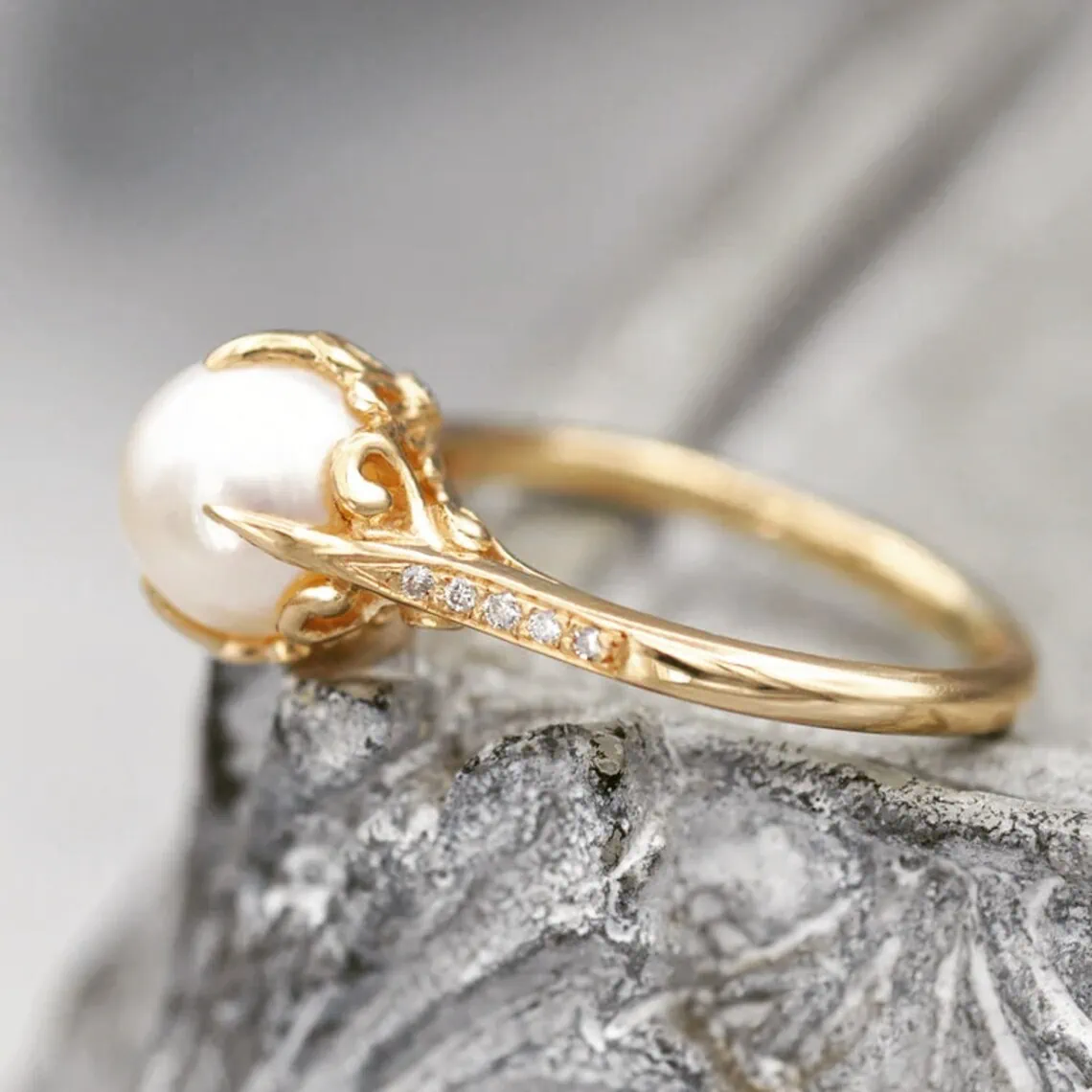
Luster is one of the most important aspects to consider when purchasing pearl jewelry and has a direct correlation to its value. What we see as luster is in fact the performance of light, traveling through the layers of nacre and reflecting back out to us.
Akoya pearls tend to have excellent luster than other pearl varieties, especially freshwater pearls. Their luster is sharp and mirror-like.
There are many reasons as to why Akoya pearls luster is so good, including the speed and style of nacre secretion by the oyster as well as the conditions of the oyster’s environment. If you’re looking for a highly lustrous and reflective pearl, then Akoya’s are a great choice.
Akoya Pearl Value
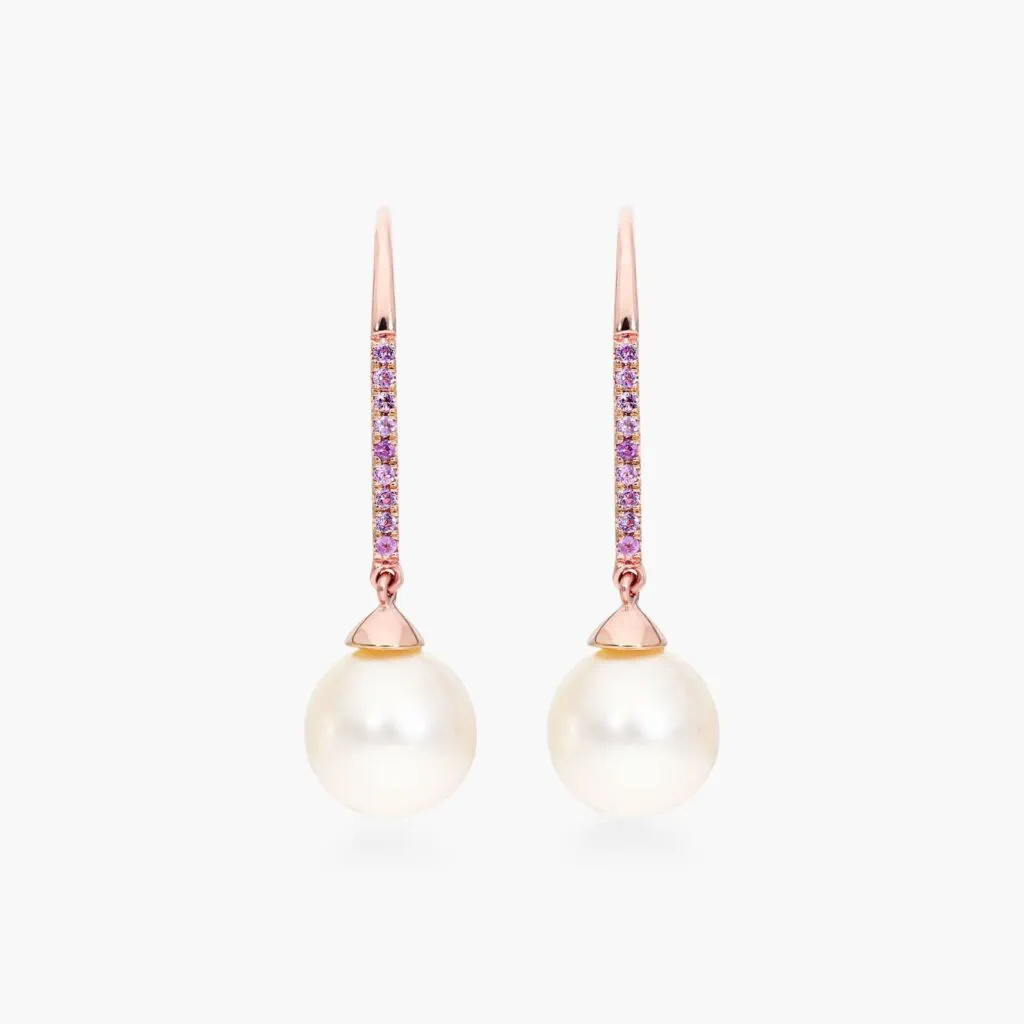
Top quality Akoya pearls can command high prices, sometimes ranging at thousands of dollars. But the price of Akoya jewelry is also dependent on the quality of the settings and workmanship.
While they are the most affordable of the saltwater pearl varieties, Akoya pearls are much more expensive than freshwater pearls. For example, compare this 18 inch Akoya pearl necklace with this 18 inch freshwater pearl necklace.
They look similar in appearance, the difference in price is almost $500!
Akoya Pearl Jewelry
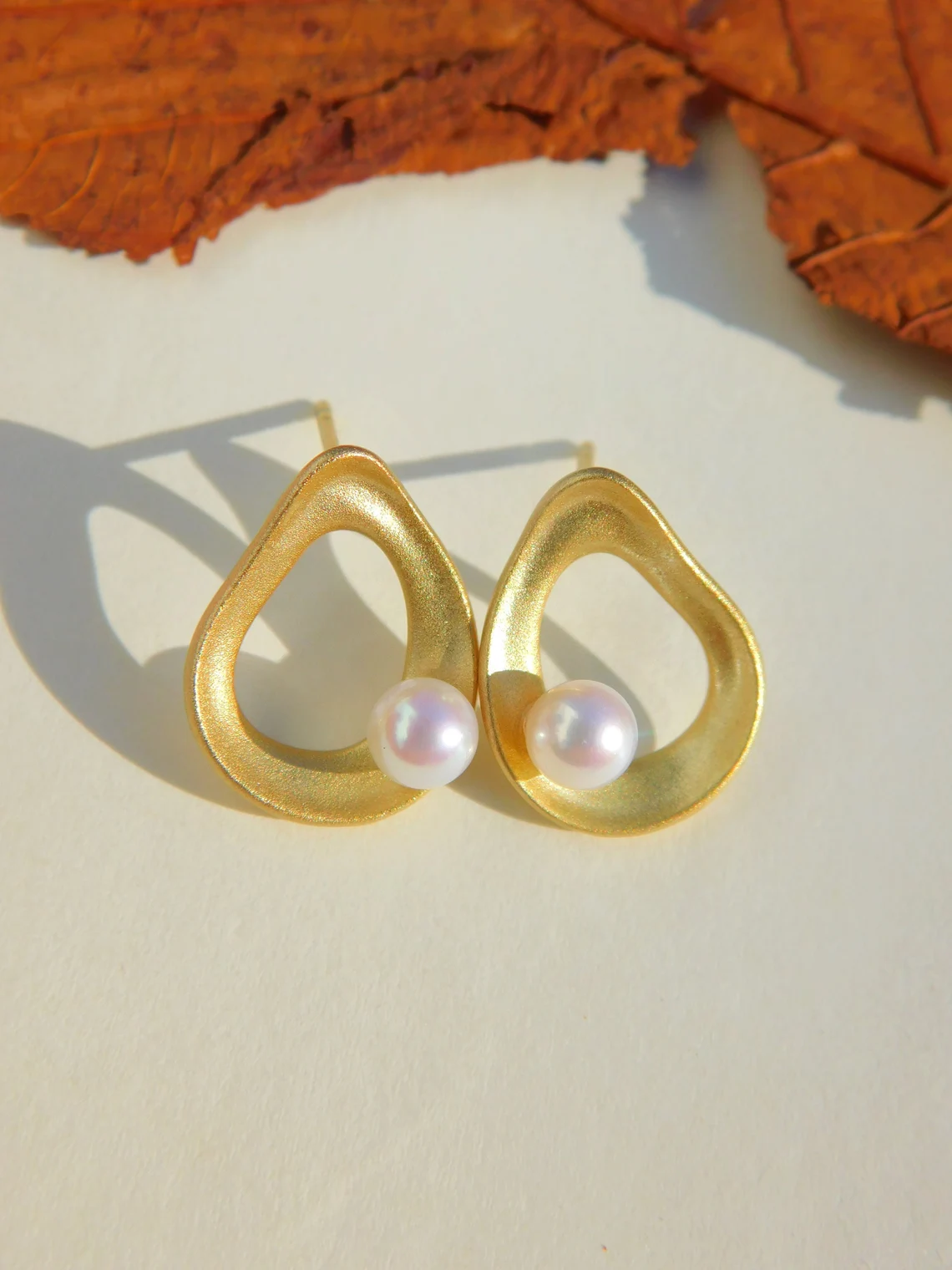
Akoya pearls are typically strung into beautiful strands for necklaces and bracelets. They can be either graduated or of uniform size, and worn individually or in layers. Layering smaller Akoya strands, whether in bracelets or necklaces, makes for an eye-catching and classy look.
Some other popular jewelry styles are Akoya pearl stud earrings, rings and classic pearl pendants. These go beautifully with any outfit, whether casual or formal, and add a level of sophistication and chicness to any look.
How Do You Grade Akoya Pearls?
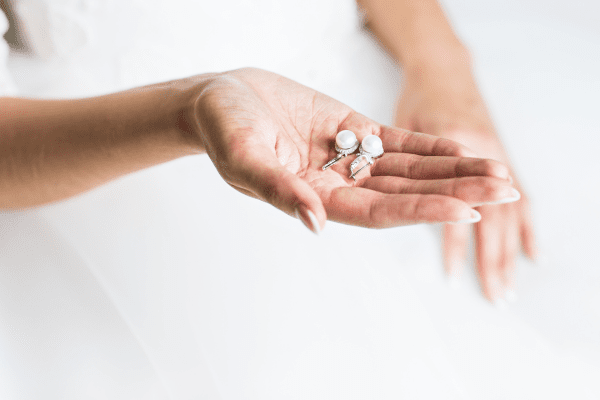
Unfortunately, there is no universally accepted industry standard for grading pearls, which can make purchasing Akoyas difficult. Unlike diamonds, which are meticulously graded based on several measurable factors, pearl grading varies from retailer to retailer.
The two commonly used grading systems for Akoya pearls are the A-Hanadama method and the A-D Tahitian System. However, even so, most retailers have their own grading standards and variations to these systems.
1. The Hanadama – A Scale
Some retailers add a fourth grade, AAAA or AAA+, to this scale. Often retailers do this to add a premium to a high quality pearl and make it seem that the pearl is even better than the highest standard. This is often simply a marketing ploy and most times, you’ll see that a retailer’s AAAA or AAA+ pearl is the same as a standard AAA pearl.
| Hanadama | This refers to the most lustrous, strongest and the best of Akoya pearls harvested in Japan. It comes with certification. Graded in Japan, Hanadama pearls must pass rigorous testing by the Pearl Science Laboratory in Tokyo. Hanadama means ‘flower pearls’. |
| AAA | Almost flawless, this is the highest quality pearl. Features include: perfectly round, virtually free of surface blemishes and defects with highly reflective luster. Up to 95% surface is blemish free. Nacre thickness should be at least 0.4 mm. |
| AA | High luster, with about 90% of surface free of blemishes or defects. Good quality with near round shape. |
| A | Low luster and 70% of surface free of blemishes and defects. Shape is off round. |
2. The Tahitian A-D System
With this method, pearls are graded into four categories with A being the highest. While this system was originally used in French Polynesia to grade Tahitian pearls, it is now used to grade other pearl varieties as well.
| A | The highest quality pearl, with excellent luster and round shape. Less than 10% of minute surface blemishes. |
| B | High luster and round shape. Some noticeable defects that may cover up to 30% of surface area. |
| C | Medium luster. Surface imperfections may cover up to 60% of surface area. |
| D | Over 60% of blemishes and defects cover the surface. Luster is not considered in D grade due to high percentage of defects. |
How to Care For Akoya Pearls
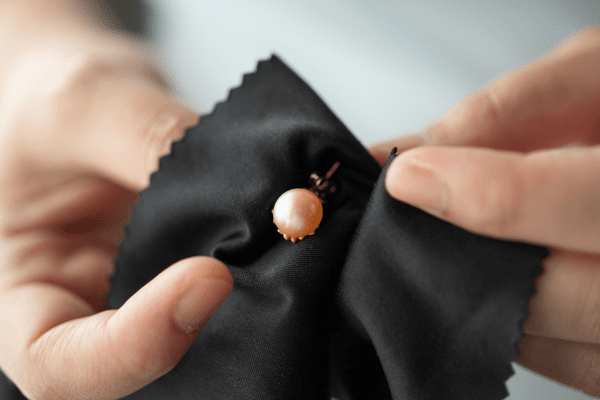
Because pearls are very soft, it is essential to take good care of them. One of the best thigns you can do for your pearls is to wear them regularly as this keeps them hydrated and polished (from your body oils).
When cleaning your pearls, always use a nonabrasive cloth, mild detergent and tepid water. Simply create a sudsy solution and use the cloth to wipe away any grime and dirt from the pearls. Make sure not to submerge the pearls for any length of time and rinse them well under running water. Soaking your pearls can damage the string and the nacre of the pearls.
Also avoid using any harsh chemicals or ultrasonic cleaners as these can damage your pearls.
When storing your pearls, avoid direct sunlight or warm environments as well as airtight containers or bags, as these can dry out the pearls and cause them to become brittle and lose their color. Placing a damp cotton ball along with the pearls in a fabric pouch will ensure that they remain hydrated. Pearls are very soft and must be stored separately to avoid scratches from other objects.
Where to Buy Akoya Pearls
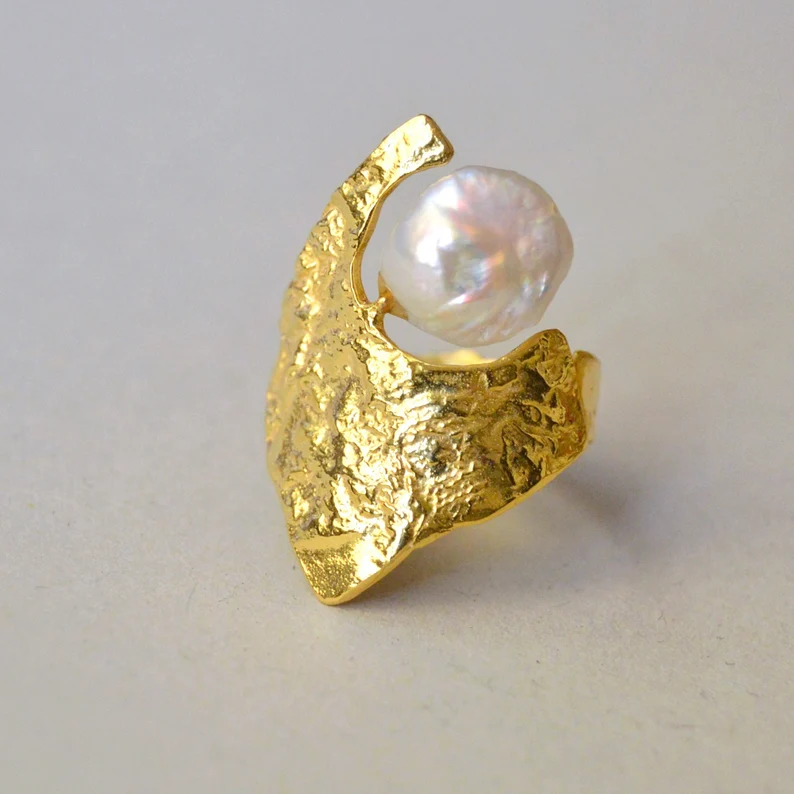
Whether you choose to shop in-store or online, the rules remain the same: ensure you’re your retailer is specialized in selling pearls and knows what they are doing. They should be able to answer your questions about their pearls and offer you sound advice if necessary. Also check that they are reputable, licensed and have a solid return policy.
While you can find great pearl jewelry at branded retailers such as Tiffany’s, Bvlgari or Mikimoto, these come with a very high premium. Rather than splurging on a brand, you can find high quality Akoya pearl jewelry at a much lower cost at other retailers.
Shopping online offers you a wide range of choice and options as opposed to shopping in-store. Also, most online pearl retailers have very competitive prices and top quality products. Almost all the popular pearl vendors sell via Amazon, meaning that you can easily compare and contrast the prices and quality of these vendors before you buy.
You can also find a range of pearl jewelry on Etsy, ranging from genuine antiques to inexpensive imitation pieces.
Read our article on best place to buy pearls USA here. Also, check this article on best place to buy pearls UK.
Culturing Akoya Pearls
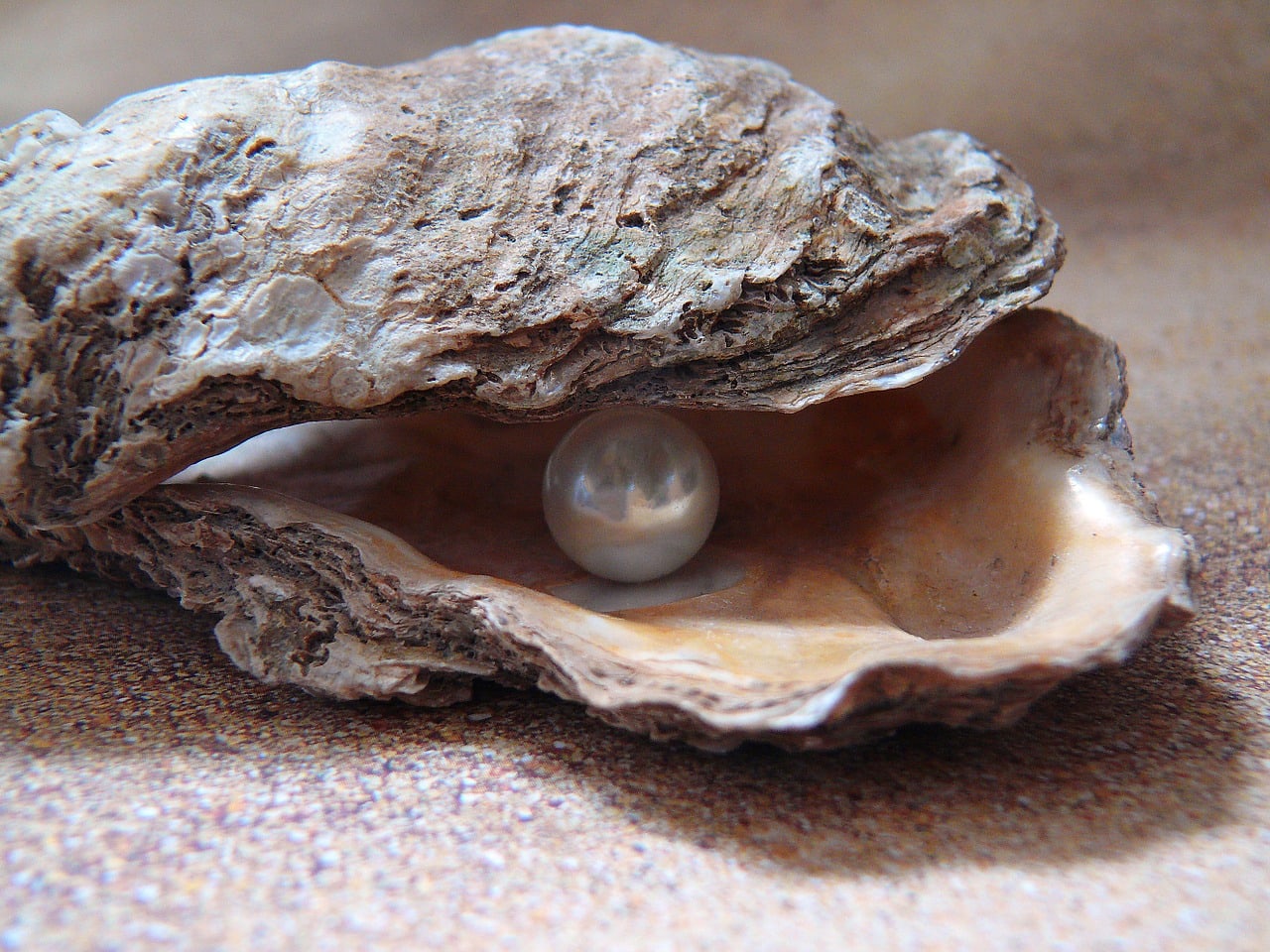
Today, all Akoya pearls on the market are cultured. It can take about one and half years for an Akoya pearl to be ready for harvesting. However, less than 5% of the harvest may be deemed of gem quality. While a freshwater mussel can contain up to 50 pearls at a time, Akoya oysters typically produce only about 2 pearls at a time. They are only nucleated once, unlike the resilient freshwater mussel which can be nucleated several times.
Of all the pearl-producing molluscs, the Akoya oyster is the smallest. In order to stimulate the growth of the pearl, trained technicians embed a beaded nucleus into the oyster. The oyster’s defence mechanism is set off and the ‘irritant’ stimulates its nacre secretion.
Only about 50% of the Akoya oysters survive the nucleation process. Over time, the oyster coats the beaded nucleus with layer upon layer of nacre, gradually forming the pearl. The longer the oyster is allowed to create the pearl, the larger, more lustrous and durable it becomes.
For the perfect Akoya pearl to form, conditions have to be just right. This includes the temperature of the water as well as the pH balance of the water. Too much acidity or alkalinity and the nacre of the pearl is affected. As a result, Akoya pearls can only be cultured in specific locations.
Wrapping Up
Akoya pearls are one of the most lustrous and beautiful types of pearls. They sit in the sweet spot at a moderate price point and are perfect for all types of jewelry. If you’re interested in other types of pearls, check out our article on pearl types.


